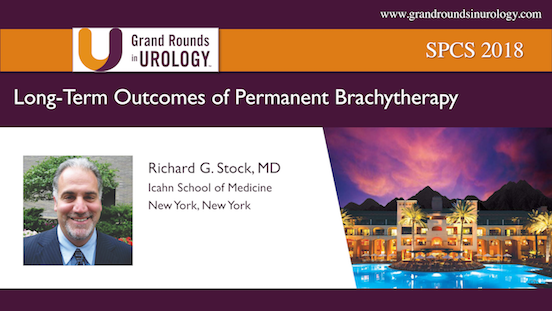Does Anatomic Rectal Displacement Improve Dosimetry and Reduce Injury?
Richard G. Stock, MD, Professor of Radiation Oncology and Director of Genitourinary Radiation Oncology at the Icahn School of Medicine at Mount Sinai in New York City, reviews the literature on rectal displacement to prevent damage to the rectum from prostate brachytherapy and external beam radiation therapy (EBRT). First, he summarizes the findings of numerous papers from the past 20 years that have identified a relationship between the dose and volume of radiation and damage to the rectum such as bleeding and mucosal changes. The more radiation reaches the rectum, and the greater the surface area of the rectum affected, the more likely patients will experience adverse effects, including greater levels of morbidity. Dr. Stock then considers how the rectum can be spared, focusing on the evidence around rectal spacers such as endorectal balloons and hydrogel spacers such as SpaceOAR. He explains that numerous studies demonstrate that by inserting a physical barrier between the rectum and the prostate, the rectum is kept separate from the radiation and therefore receives a lower rate of toxicity. Dr. Stock notes that patients experience more rectal discomfort with spacers like SpaceOAR than without, but suggests that the reduction of significant issues such as bleeding outweigh the downsides. He concludes by discussing a recent study of his which found that SpaceOAR can be inserted before brachytherapy and EBRT.
Read More





